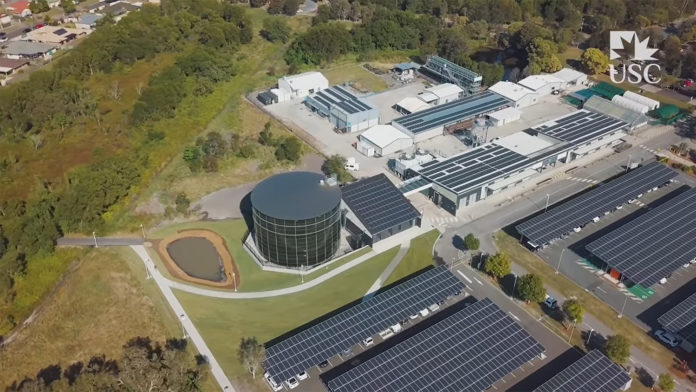The use of SunPower modules to reduce electricity bills and carbon emissions has made the combination of solar panels and schools more and more common. In September, the University of the Sunshine Coast (USC) in Queensland, Australia, switched on its three-story ‘water-battery’ to power its campus’ air conditioning systems.
Rather than a traditional battery – which poses disposal problems for the environment – USC opted for a thermal energy storage tank, mostly consisting of water. That means minimal waste when it comes time to replace. The giant water-battery is using the solar energy generated by 6,000+ solar panels would cut the energy usage on the campus by 40%.
USC previously set an ambitious carbon reduction target and hopes to achieve zero carbon emissions by 2025. For this reason, USC teamed up with private company Veolia to find a new clean energy solution for its buildings, hoping to reduce electricity usage in campus’ air-conditioning. And they come up with a solution called “water-battery.”
They designed a new giant thermal energy storage system that uses more than 6,000 solar panels with a capacity of 2.1 MW installed on the rooftop of the campus and the parking lot. This energy is transferred to the water-battery, where it cooled the 4.5 million megaliters of water inside a three-story tank. The water, once chilled using the power of the sun, will be used in air conditioners across the USC Sunshine Coast campus.
USC Chief Operating Officer Dr. Scott Snyder said that in the next 25 years, the project could save more than $100 million in energy costs and will also reduce the carbon footprints by 100,000 tonnes of CO2 emissions over the next 25 years.
